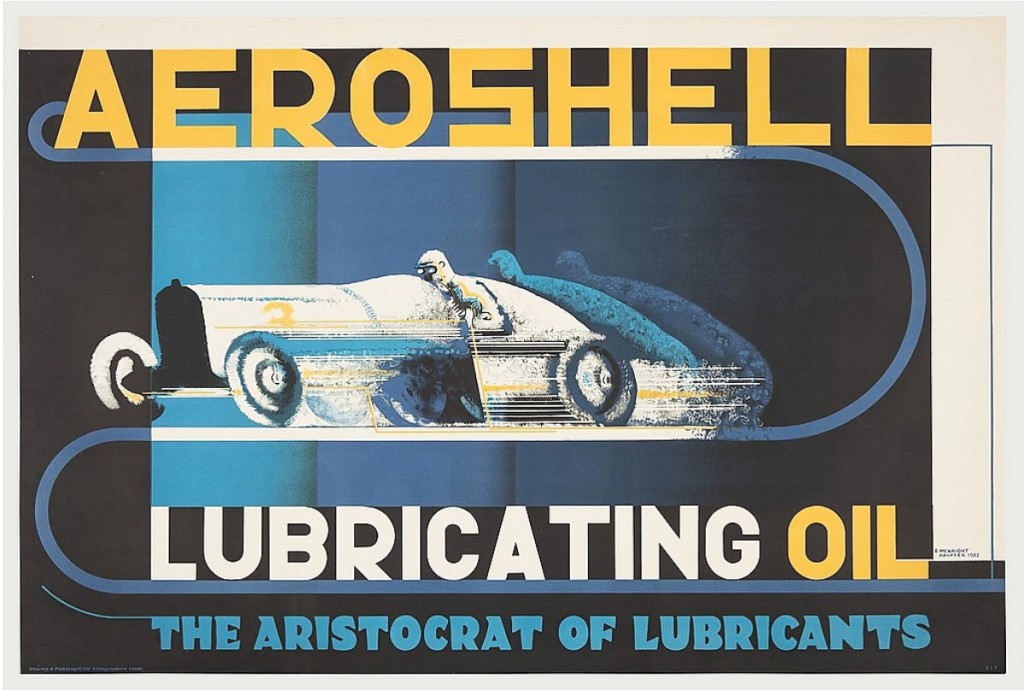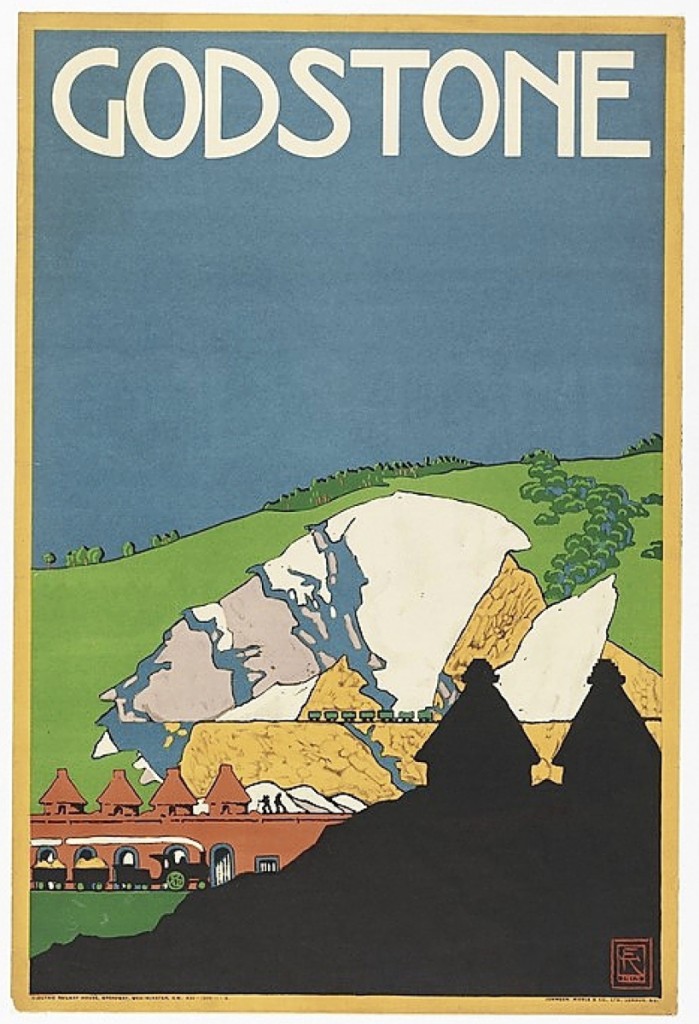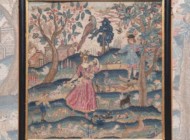
“Aeroshell Lubricating Oil” poster, 1932, published by Shell-Max and BP Ltd., London, Printed by Chorley & Pickersgill, Ltd, lithograph, Merrill C. Berman collection.
All work illustrated & designed by E. McKnight Kauffer & courtesy Cooper Hewitt
NEW YORK CITY – Cooper Hewitt, Smithsonian Design Museum has debuted the largest-ever exhibition of works by E. McKnight Kauffer (American, 1890-1954), a pioneer of commercial art – the profession known today as graphic design. On view through April 10, “Underground Modernist: E. McKnight Kauffer” features some 200 objects to examine the designer’s impact and legacy across media.
Hailed in his lifetime as “the poster king,” Kauffer brought design to many creative industries. He made modernism accessible by applying cutting-edge styles to designs for advertising, literature, theater, transportation and more. He adopted emerging avant-garde aesthetics in provocative ways to promote services and products.
Cooper Hewitt holds one of the most extensive collections of Kauffer’s designs in the world, comprising material in both the drawings, prints and graphic design department and the archives department. The exhibition is organized by Caitlin Condell, associate curator and head of drawings, prints and graphic design at Cooper Hewitt, and Emily M. Orr, PhD, assistant curator of modern and contemporary American design at Cooper Hewitt.
Organized chronologically in ten sections, the exhibition traces Kauffer’s career from his beginnings as a painter to his transformation into an internationally renowned commercial artist. At the height of his career in the 1920s and 1930s, Kauffer, an American, was among the most influential artists in England. In 1940, he moved to New York, joining the influx of European designers who brought dynamism to American advertising. His remarkable output includes eye-catching posters for the London Underground, illustrations for celebrated works of literature and iconic graphics for major corporations such as Shell-Mex and American Airlines.
Kauffer widened the scope and impact of his practice through collaborations with his peers in art, literature, performance and film. A champion of new media, Kauffer’s work included commissions as varied as film titles for Alfred Hitchcock’s The Lodger, illustrations for T. S. Eliot’s Ariel poems, costumes for theatrical and ballet productions, and covers for novels by H.G. Wells, Aldous Huxley and Ralph Ellison. He shared a dark room with Man Ray and worked with groundbreaking textile designer Marion V. Dorn, who would later become his wife. Dorn’s designs will be highlighted at key moments in the exhibition.

“Godstone,” poster, 1915, printed 1916, Published by Underground Electric Railways Company, Ltd., London, Printed by Johnson, Riddle & Co., London, Matt Flynn photo.
Though Kauffer considered himself a progressive and an egalitarian, his commissioned work tells a more complicated story about his ideals, his privilege and his perspective on race. “Underground Modernist” will examine how Kauffer’s designs expressed and challenged the energy, ideas and unrest of his time. Over the course of four decades, he responded to the quickening pace of contemporary life by capturing the attention of a fast-moving public. His dedication to design as a social responsibility guided his distinguished career and defines his legacy.
Kauffer believed that modern art should move beyond the walls of museums and galleries to infiltrate daily life. He argued that innovative expression should be matched by social and cultural engagement, and that designers should be accountable to their public as well as to their clients. “The artist in advertising is a new kind of being,” Kauffer wrote in 1938. “His responsibilities are to my mind very considerable. It is his business constantly to correct values, to establish new ones, to stimulate advertising and help to make it something worthy of the civilization that needs it.”
Cooper Hewitt Smithsonian Design Museum is at 2 East 91st Street. For more information, www.cooperhewitt.org or 212-849-8400.












